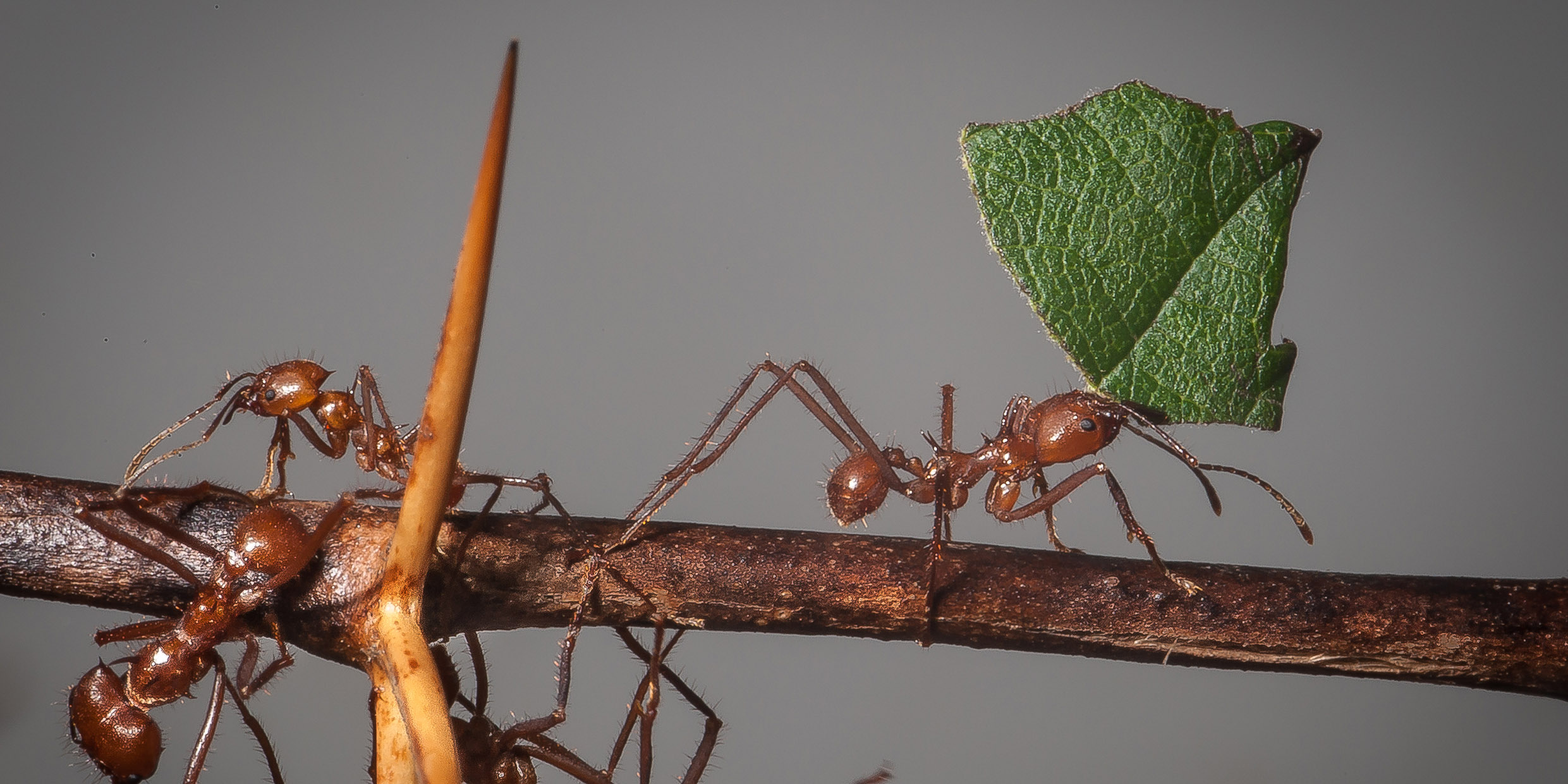Originally published 24 May 1999
Remember those comics we loved as kids that featured insects living in cozy cottages under the roots. Matchboxes for beds. Bottlecaps for tables. Thimbles for bath tubs. Postage stamps for carpets.
Bucky Bug and his girlfriend June tending a garden, with hoes made from safety pins and a wheelbarrow made from a pill box, matchsticks and a button. Just like us, only smaller.
But even without the matchboxes, bottlecaps and buttons, real bugs share lots of attributes with humans.
Consider the leafcutter ants of South and Central America.
The ants cultivate fungal gardens in underground chambers. They leave the nest to cut bits of leaves from nearby vegetation. These they carry home, chew into a pulp, and use to manure their crop, a mushroom fungus. The fungus produces “fruits” called gongylidia which the ants eat.
The arrangement works to the advantage of both ant and fungus. The ants scrape away the waxy coating on the leaves which defends the plant against attack by fungi. The fungus digests chemicals in the leaves which are dangerous to ants.
The ants tend their gardens with loving care. When the time comes to start a new colony, a daughter ant queen takes a bit of fungus from the parental garden and uses it to “seed” a new garden in a new nest.
Like all gardeners, the ants must watch for “weeds,” in the form of an unwanted fungus that intrudes upon the food crop, possibly by hitchhiking from outside the nest on the bodies of the ants. If not controlled, these interlopers can destroy a garden.
The remarkable horticultural habits of leafcutter ants have been known for some time. In an [April 1999] issue of Nature, a group of researchers working in Panama has added a further refinement.
The ants use pesticides to fight the “weeds.”
Antibiotic bacteria live on the bodies of the ants, and are used by them to keep garden “weeds” in check. These bacteria belong to the same genus—Streptomyces—from which are derived more than half of the antibiotics used by humans. Humans, it seems, are Johnny-come-latelys to the use of garden pesticides.
Gardening. Manure. Crops. Weeds. Pesticides. It all sounds terribly familiar — a transposition of the vocabulary of human culture onto insects.
In this case the transposition is generally accurate, but sometimes the use of human analogies to describe nonhuman activities can be misleading.
Ted R. Schultz writing in Nature about leafcutter ants, says: “Roughly 50 million years ago in South America, a lone species of ant abandoned its primitive hunter-gatherer ways and, in a unique event in ant evolution, adopted an agrarian lifestyle. Entering into a partnership with a parasol mushroom, these agricultural pioneers learned to weed, manure, and propagate their fungal crops, ensuring a reliable source of food.”
Although Schultz knows exactly what he is talking about, the impression is strong of a group of plucky bugs striking out willfully to invent a new kind of life, negotiating agreements with fungi, honing their agricultural skills with determined practice, even discovering the miracle powers of Streptomyces to control pests.
But of course planning and foresight have nothing to do with it. Nor does the miraculous intervention of Providence or experiential learning on the part of the ants. Even such highly complex living systems as that which embraces the ants, their crop fungus, the weed fungus, and the antibiotic bacteria can be accounted for by natural selection acting on random genetic mutations.
In fact, this is exactly the kind of adaptive balance between organisms that one would expect of Darwinian evolution.
Anyone who doubts the power of natural selection to evolve astonishingly complex systems need only wait and see. My guess is that the next 100 years will be the true Darwinian century, as we learn to apply random mutations and artificial selection to Darwinian machines — hugely complex systems of interacting agents, both animate and inanimate, that will evolve in unanticipated ways to solve problems that cannot be tackled as efficiently in any other way.
Look for artificial intelligence, purpose-made drugs, scientific theories, even artificial life forms inventing themselves by trial and error, with successful systems proliferating in unexpected ways and failures falling by the wayside. Look for webs of living neurons anchored to silicon chips connecting themselves to solve complex problems. Look for DNA-based computers spinning out undreamed-of innovations. Look for robots that program themselves based on their experience.
It’s spooky, maybe scary, but it will happen. We have only begun to harness the Darwinian paradigm for technological purposes, mimicking artificially what nature does naturally. The kinds of adaptive complexity that took the Bucky Bugs millions of years to evolve will pour forth with mind-spinning rapidity from human ingenuity, sweeping us into a novel world that no one alive today can even remotely imagine.



